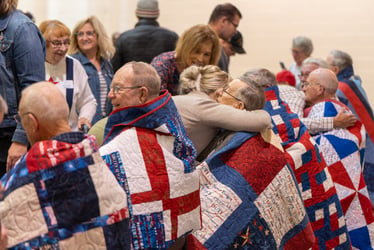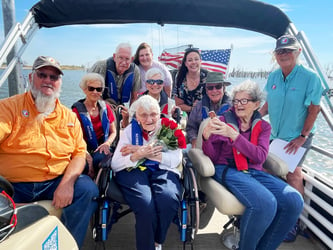Independent living vs. retirement homes: What’s the difference and what you need to know
January 16, 2023
It’s a great time to be aging. Never before have there been more choices for seniors to live out their retirement. Never before have there been more options for managing health conditions. Baby boomers have officially entered the retirement scene and with them have brought an array choices...and an array confusion.
More choices generally means more questions than answers for people looking for retirement living either for themselves or for loved ones. Health care professionals have coined terms for options and used them on brochures and no one knows what they are talking about. Retirement living, senior living, independent living, assisted living, memory care, skilled nursing, aging in place, continuum, long-term care, nursing home, retirement community, hospice...phew.
So what do you need to know? The most important thing to know is that there are options available for all lifestyles. A few decades ago, nursing homes were the only option. But today there are options. For people who want to travel more and don’t want the burden of home maintenance - there’s a senior living community for that. For people who have a minor health condition to manage - there’s a senior living community for that. For people who are experiencing memory loss and need a safe environment - there’s a senior living community for that. Finding the best match for your needs can be like finding a needle in a haystack. But that’s what we’re here for.
Senior Living Definitions
Below are some common definitions for senior living terms. Please note that some communities define these differently, so always ask questions to ensure you understand the definition at the specific community you’re exploring.
- 55+ Active Living - The first step in retirement living, 55+ active living offers maintenance-free apartments with neighbors in your season of life. Amenities vary, so make sure you ask questions about what is and isn't included in monthly fees. At Immanuel, things like utilities, home and ground maintenance are all included. With 55+ active living, no health care support is available onsite, but residents can hire outside providers if needed. This type of living environment is best for people without daily professional health care support.
- Independent Living - As its name would suggest - independent living is all about independence. These communities typically provide housing for ages 55+, usually in apartments, but sometimes in townhomes or cottages. Like 55+ active living, there’s no health care provided here, no nurses on staff, no doctors. This living environment is for retirees who are tired of mowing the lawn; their two story corner lot is just too big; or they want the freedom to visit family for Christmas without paying a neighbor to scoop the sidewalk. At Immanuel, independent living communities offer meal plans - dining rooms and restaurants onsite as well as organized social activities. But not all independent living communities do, so be sure to ask questions when you tour.
- Assisted Living - Assistance, as needed, perfectly describes assisted living care. Communities that provide assisted living do have some health care support on staff to help residents with physical challenges to what the medical world calls “activities of daily living” — getting around, bathing, dressing, medication management, etc. Often, assisted living support is through various “packages” as defined by individual communities. Some services you pay for only if you need them. Many assisted living communities specialize in early memory support, assistance with managing chronic diseases, mobility support and more. Utilities, social opportunities and other amenities are often included in monthly charges.
- Skilled Nursing - Skilled nursing level of care provides more extensive health care support for individuals recovering from a surgery, illness or injury. Nursing staff are on-site 24-hours a day to help manage conditions. Typically, skilled nursing is temporary - provided after a surgery or illness and often rehabilitation services, like physical therapy, are included.
- Long-Term Care - Nursing support, 24-hours a day for the foreseeable future. Long-term care is your traditional nursing home - communities where individuals require a high-level of nursing support on a long-term basis. Though these communities provide nursing home care, some provide it in non-traditional ways, like The Cove and Harbor houses at Immanuel’s The Landing at Williamsburg Village. These aren’t your grandmother’s nursing homes!
- Continuum of Care Campus - These are senior living communities that offer a wide-range of support services - everything from independent living to assisted living to skilled nursing and long-term care—all on one campus. Becoming more popular as seniors are demanding to “age in place” and not find a new home when care needs change. These environments are also popular for spouses finding homes where one partner needs more care than another.
- Retirement Communities - A catch-all phrase for senior living, retirement community is defined by whomever owns that community. Don’t assume any type of care level if you see the label of “retirement communities” - ask more questions to determine what exactly is offered at this community.
Need more help breaking it down? Immanuel’s senior living consultants have helped thousands of seniors and families make the living choices that are the best for them—whether it’s with us, or somewhere else. We aren’t driven by profits, but by a mission of service. Contact us today or view our communities page for more information.





